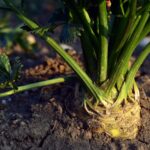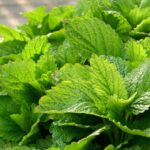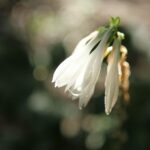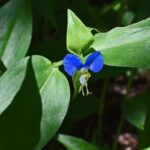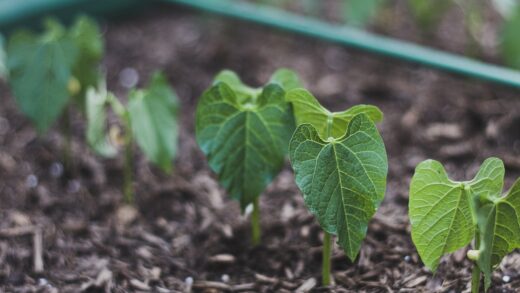The American tulip tree, or Liriodendron tulipifera by its scientific name, is a majestic ornamental tree native to North America, distinguished by its characteristic tulip-like flowers and uniquely shaped leaves. Although it is fundamentally considered a hardy, adaptable species that thrives excellently in the climate of Central Europe, it is unfortunately not invulnerable. The careful gardener and arborist must be aware of the diseases and pests that can threaten the tree’s health, its aesthetic value, and in more severe cases, even its existence. Prevention and early detection are the key to effective defense, which is why a regular, attentive inspection of the tree is essential.
The Hidden World of Fungal Diseases
The foliage and internal tissues of the tulip tree can be attacked by numerous fungal pathogens, a presence that often only becomes apparent in an advanced stage of symptoms. The most well-known of these diseases is perhaps powdery mildew, caused by the fungus Erysiphe liriodendri. The infection forms a characteristic white or grayish, powdery coating on the surface of the leaves, typically in the latter half of summer and early autumn. Although powdery mildew is rarely fatal, it can be aesthetically very disturbing and, by inhibiting photosynthesis, can weaken the tree, making it more susceptible to secondary infections.
Another common problem is leaf spot, which can be caused by various fungal species, such as members of the Mycosphaerella or Phyllosticta genera. These pathogens create spots of various sizes and colors—usually brown, black, or with a yellowish border—on the leaves. Over time, the spots can grow, merge, and lead to the necrosis of the leaf tissue. In the case of a severe infection, the tree may shed its leaves prematurely, which reduces its vitality and a growth vigor for the following year.
In the prevention and treatment of fungal infections, ensuring a suitable environment plays a crucial role. Avoiding overly dense planting and pruning that ensures crown ventilation contribute to preventing the formation of an unfavorable, humid microclimate. It is important to collect and destroy fallen, infected foliage, as pathogens overwinter on the plant debris left on the ground. In justified cases, especially for young, valuable specimens, the preventive application of copper or sulfur-containing fungicides at the beginning of the vegetation period can also be considered.
Although prevention is the most effective method of defense, treating already established infections is also possible. In the case of powdery mildew, systemic fungicides can offer an effective solution to stop the spread of the disease. In the case of leaf spot, treatment is more difficult; here the emphasis is on preventing the next year’s infection by removing the infected plant parts and improving the tree’s overall condition. Adequate nutrient supply and proper watering contribute to strengthening the tree’s natural defenses.
More articles on this topic
Wilt Diseases and Branch Dieback
One of the most dangerous diseases of the tulip tree is Verticillium wilt, caused by soil-borne fungi of the genus Verticillium. This pathogen enters the plant through the roots and then multiplies in the transport tissues, the xylem, clogging them. As a result of the infection, the transport of water and nutrients is hindered, which leads to the wilting, yellowing, and then rapid death of the foliage. The symptoms often first appear on only one side of the tree, on one or more large branches, resulting in a characteristic, one-sided wilting.
The diagnosis of Verticillium wilt is not always simple, but a tell-tale sign is a brownish-greenish discoloration in the sapwood, visible in the cross-section of the affected branches. Unfortunately, there is no specific, curative chemical defense against the disease. The fight is based on prevention: the tree should not be planted in areas where the infection has occurred before, and damage to the root system during soil work should be avoided. In the early stages of the disease, the immediate removal of the infected branches, cutting deep into the healthy tissue, can slow the process.
Another serious problem affecting the woody parts is canker, which can be caused by various fungi, such as species of Nectria. These pathogens typically infect the tree through wounds—for example, mechanical damage, frost cracks, or improper pruning. At the site of the infection, the bark sinks, discolors, and then dies, and underneath it, the phloem and cambium also perish. The canker sores can grow slowly, and if they completely encircle the branch or trunk, they cause the death of the affected part.
The treatment of cankers is based on the surgical removal of the infected parts. The dead, cankerous bark must be removed with a sharp knife, going down to the healthy tissue, and then the wound surface should be treated with a suitable wound dressing to prevent further infections and desiccation. Here too, prevention is key, which includes professional pruning, avoiding unnecessary wounds, and maintaining the tree’s overall health. Strong trees in good condition are often able to surround and isolate smaller canker sores by forming a callus.
More articles on this topic
The Invasion of Sucking Pests
Sucking pests that feed on the sap of the American tulip tree can cause significant damage, especially on younger, developing trees. One of the most significant of these is the tuliptree scale (Toumeyella liriodendri), a relatively large, hemispherical scale insect. The females settle on the branches and thinner twigs, where their sucking weakens the plant, leading to branch dieback, yellowing of the leaves, and growth stoppage.
These scale insects excrete large amounts of honeydew, a sugary, sticky liquid. This honeydew coats the leaves, branches, and even the area under the tree, attracting ants and wasps. An even bigger problem is that sooty mold fungus settles on the honeydew, forming a black, sooty coating on the leaves. Although sooty mold does not directly harm the tree, by covering the leaf surface it inhibits photosynthesis, further weakening the plant and detracting from its ornamental value.
Another common sucking pest is the tuliptree aphid (Illinoia liriodendri). These small, green or yellowish-green insects form dense colonies primarily on the underside of the leaves, along the veins. Their sucking can cause distortion and yellowing of the leaves, and they also produce a considerable amount of honeydew, promoting the appearance of sooty mold. Aphids reproduce quickly, so in a short time they can create a serious invasion, especially in spring and early summer.
The control of sucking pests is based on regular inspection and early intervention. In the case of a minor infestation, the scale insects can be rubbed off the branches, and the aphids can be washed off with a strong jet of water. A dormant oil spray at the end of winter, before the buds break, effectively thins the overwintering scale larvae. During the growing season, systemic insecticides or potassium soap-based products can be used, but beneficial organisms, such as ladybugs and lacewings, which are the natural enemies of these pests, must always be taken into account.
Chewing Pests and Other Problems
The foliage of the tulip tree can also be damaged by chewing pests, although their presence is usually less dramatic than that of sucking pests or wilt diseases. The caterpillars of various moth species, such as some inchworms or owlet moths, can feed on the leaves, creating smaller or larger holes and notches in them. Although a healthy, mature tree can easily tolerate a moderate loss of foliage, on young seedlings a stronger caterpillar invasion can already cause a significant growth delay.
A characteristic damage pattern is caused by the yellow poplar weevil (Odontopus calceatus). This small, black weevil damages in two ways: the adults chew characteristic “S”-shaped marks in the leaves while feeding on the leaf tissues, and the larvae are leaf miners, creating blotchy mines within the leaves. These mines initially appear as light, then browning and necrotic spots, reducing the photosynthetic surface.
The control of chewing pests generally depends on the extent of the damage. For minor chewing, it is not necessary to intervene, as the tree easily compensates for it. In the case of a larger caterpillar invasion, biological insecticides, such as preparations based on Bacillus thuringiensis (Bt), can be effective, as they act selectively only on caterpillars, sparing beneficial insects. The control of weevils is more difficult; here the most important thing is prevention and keeping the tree in good condition.
It is also important to mention abiotic, i.e., non-living, causes of damage, which are often confused with diseases or pests. During hot, dry summer periods, the edges of the leaves of inadequately watered trees can turn brown and dry out, which is a sign of drought stress. Nutrient deficiency, especially iron deficiency in calcareous soils, can cause yellowing between the veins of the leaves (chlorosis). The correct recognition of these symptoms is essential for applying the appropriate treatment, such as balanced watering or a targeted nutrient supply.
The Hidden Dangers of the Trunk and Roots
Although the problems of the foliage and thinner branches are the most visible, the health of the trunk and roots, which are responsible for the tree’s stability and nutrient uptake, is of vital importance. Mechanical damage to the trunk, caused for example by lawnmowers, string trimmers, or construction work, represents an open gate for wood-decaying fungi. These fungi slowly, over the years, break down the internal tissues of the tree, which initially does not cause spectacular symptoms but can fatally weaken the tree’s structural integrity, leading to breakage in a strong storm.
Problems affecting the root system are often the most difficult to diagnose, as they are hidden underground. Excessive soil compaction, for example from vehicle traffic or the storage of building materials, limits the oxygen supply and water uptake of the roots. This leads to a general decline of the tree, weak growth, small leaves, and a thinning of the crown. Waterlogging, a poorly drained soil, can also lead to root suffocation and root rot, processes that are accelerated by various fungal and bacterial pathogens.
To preserve the health of the root system, it is essential to protect the tree’s root zone. This area, which extends at least to the drip line of the crown, should be kept free of activities that cause soil compaction. Applying a layer of mulch around the tree helps to conserve soil moisture, moderates soil temperature fluctuations, and prevents weed growth, while also protecting the trunk from mower damage. It is important that the mulch does not come into direct contact with the tree trunk to avoid rot of the bark.
In more severe cases, when cankers or the fruiting bodies of wood-decaying fungi are already visible on the trunk, the intervention of a professional arborist is absolutely necessary. An expert can assess the condition of the tree, the risk of breakage, and propose the necessary interventions, which can be special pruning techniques to reduce the weight of the crown or, in the last resort, the removal of the tree before it causes an accident. To solve root problems, there are also soil loosening and aeration procedures that can improve the condition of the tree.
Integrated Pest Management in Practice
The key to preserving the long-term health of the American tulip tree lies in the application of the integrated pest management approach. This holistic approach focuses not only on treating problems that have already arisen, but also emphasizes prevention and the strengthening of the tree’s natural defenses. The first and most important step is the choice of the right planting site, taking into account the tree’s needs for light, water, and nutrients, as well as the soil structure and pH. A tree planted in an inherently stressful environment will be much more susceptible to all kinds of diseases and pests.
Another fundamental pillar of prevention is professional and conscious care. This includes balanced watering, especially during dry periods, and a nutrient supply adapted to the tree’s needs. Regular but not excessive pruning helps to form an airy, healthy crown, reducing the risk of fungal infections and allowing for the timely removal of diseased or damaged branches. Keeping the tree’s environment clean, removing fallen leaves and weeds, also reduces the chances of pathogens and pests overwintering.
An important element of integrated pest management is the regular observation of the tree. At least once a week, it is advisable to thoroughly inspect the leaves, branches, and trunk for early signs of diseases or pests. Quick detection allows for intervention before the problem becomes serious and often makes the use of strong chemicals unnecessary. Promoting biodiversity in the garden, for example by planting flowering plants, attracts beneficial insects such as ladybugs, hoverflies, and lacewings, which help to keep pest populations in check.
If, despite preventive measures, a plant protection intervention is necessary, the integrated approach dictates that priority be given to the least drastic and most environmentally friendly solutions. These can be mechanical methods, biological pesticides, or selective preparations that spare beneficial organisms. The use of broad-spectrum synthetic insecticides and fungicides should only be carried out in the most extreme and justified case, always strictly following the instructions for use, to protect the environment and our own health.








